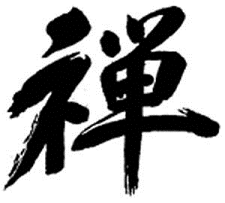It follows the word compound 'upadanakhandha' can be translated as 'aggregates subject to clinging' or 'aggregates of clinging'.
.....
[11:32 AM, 8/2/2020] John Tan: Tsongkhapa spoke about appropriated aggregates in his lam-rim chen-mo.
[11:32 AM, 8/2/2020] John Tan: Mmk [Mūlamadhyamakakārikā] also
....
https://dhammawheel.com/viewtopic.php?f=13&t=29517&p=425812#p425812Re: The 3 marks of what, exactly?
Unread post by vinasp » Sun May 21, 2017 11:55 am
Hi everyone,
"Bhikkhus, form is impermanent, feeling is impermanent, perception is impermanent, volitional formations are impermanent, consciousness is impermanent....." SN 22.12
“Bhikkhus, form is suffering, feeling is suffering, perception is suffering, volitional formations are suffering, consciousness is suffering....." SN 22.13
“Bhikkhus, form is nonself, feeling is nonself, perception is nonself, volitional formations are nonself, consciousness is nonself....." SN 22.14
These may appear to be talking about the five aggregates, but I think that the five clinging aggregates are meant. All three continue in this way:
"Seeing thus, bhikkhus, the instructed noble disciple experiences revulsion towards form, revulsion towards feeling, revulsion towards perception, revulsion towards volitional formations, revulsion towards consciousness. Experiencing revulsion, he becomes dispassionate. Through dispassion his mind is liberated. When it is liberated there comes the knowledge: ‘It’s liberated.’ He understands: ‘Destroyed is birth, the holy life has been lived, what had to be done has been done, there is no more for this state of being.’”
Clearly, the aggregates mentioned at the start are those of an unliberated individual.
Another possibility is that 'form is suffering', and the rest, are not meant to be understood as ontological statements, but as how these things should be regarded. This explains 'seeing thus' as what leads to liberation.
Actual form is experienced, but the 'form aggregate' may mean a habit of regarding form in the wrong way, as permanent, a source of pleasure, and in relation to a self. If so, then the form aggregate will vanish when seen in the right way.
It seems that the discourses do not always make an explicit distinction between the aggregates and the clinging aggregates.
Ven. Bhikkhu Bodhi, while not entirely rejecting the distinction, follows the Abhidhamma and Commentaries, arguing that the Arahant is still described by clinging aggregates.
Perhaps we should assume that almost all teaching on the aggregates is about the five clinging aggregates.
Regards, Vincent.
....
A. From MN 44, the Culavedalla Sutta, The Shorter
Series of Questions and Answers
Scene: Householder Visakha has a
Q&A with Bukkhuni Dhammadina
2. “Lady…What is called identity by
the Blessed One?”
“Friend Visakha, the five
aggregates affected by clinging are called identity by the Blessed One; that
is, the material form aggregate affected by clinging, the feeling aggregate
affected by clinging, the perception aggregate affected by clinging, the mental
formations aggregate affected by clinging, and the consciousness aggregate
affected by clinging.”
7. “Lady, how does identity view
come to be?”
“Here, friend Visakha, an untaught
person regards …material form as self, or self as possessed of material
form…..feeling as self, or self as possessed of feeling…. He regards
perceptions as self or as self possessed of perceptions…. mental formations as
self, or self as possessed of mental formations…. consciousness as self, or
self as possessed of consciousness….”
8. “Lady, how does identity view
not come to be?”
“Here, friend Visakha, a well-taught
noble disciple, who has regard for the noble ones and is skilled and
disciplined in their Dhamma….does not regard feeling as self or self as of
possessed of feeling…. He does not regard perceptions as self or self as
possessed of perception….He does not regard material form as self or self as
possessed of material form….he does not regard mental formations as self…..does
not regard consciousness as self….”
.........
.........










